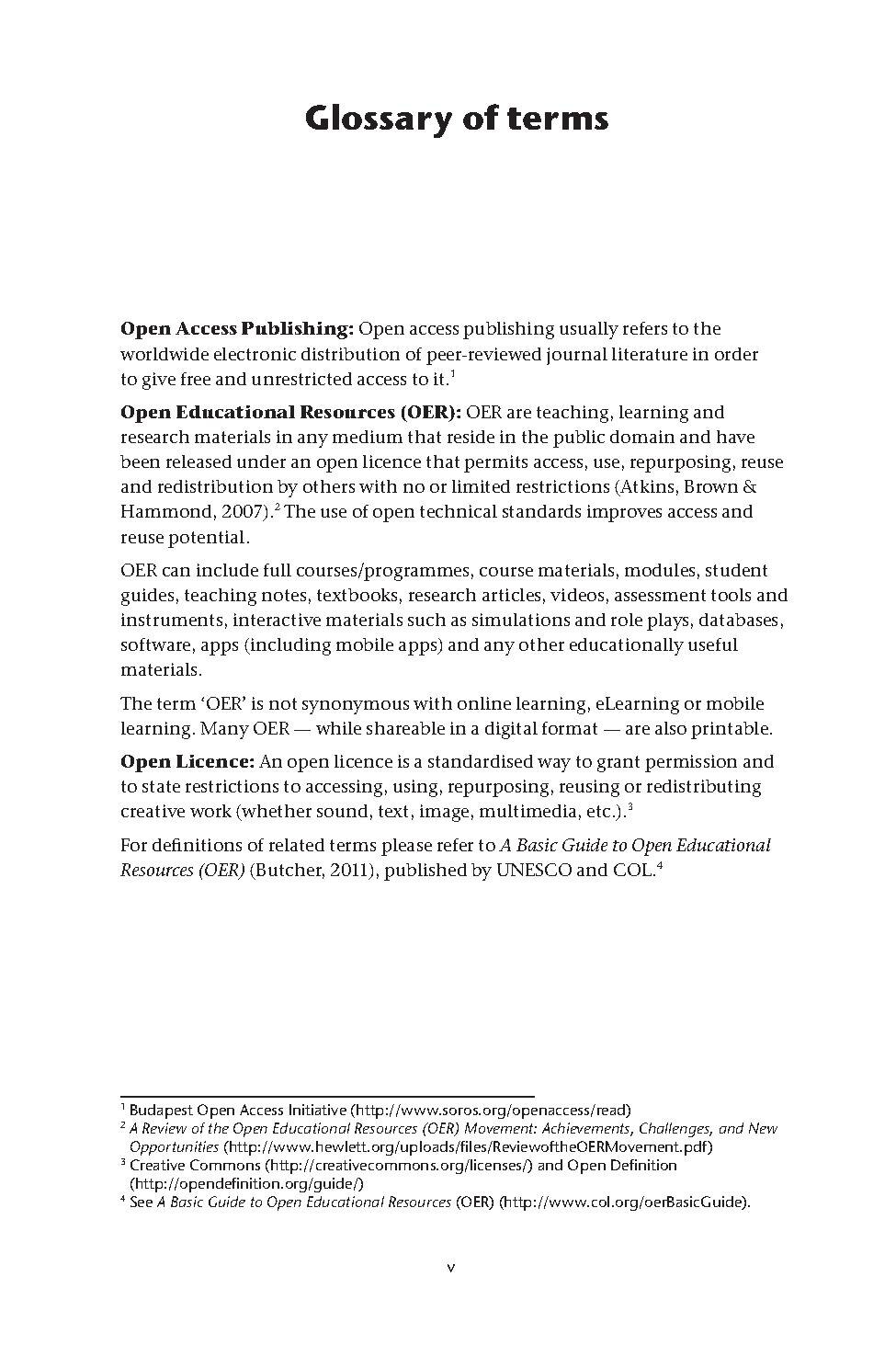Glossary of terms
Open Access Publishing: Open access publishing usually refers to the worldwide electronic distribution of peer-reviewed journal literature in order to give free and unrestricted access to it.[1]
Open Educational Resources (OER): OER are teaching, learning and research materials in any medium that reside in the public domain and have been released under an open licence that permits access, use, repurposing, reuse and redistribution by others with no or limited restrictions (Atkins, Brown & Hammond, 2007).[2] The use of open technical standards improves access and reuse potential.
OER can include full courses/programmes, course materials, modules, student guides, teaching notes, textbooks, research articles, videos, assessment tools and instruments, interactive materials such as simulations and role plays, databases, software, apps (including mobile apps) and any other educationally useful materials.
The term 'OER' is not synonymous with online learning, eLearning or mobile learning. Many OER — while shareable in a digital format — are also printable.
Open Licence: An open licence is a standardised way to grant permission and to state restrictions to accessing, using, repurposing, reusing or redistributing creative work (whether sound, text, image, multimedia, etc.).[3] For definitions of related terms please refer to A Basic Guide to Open Educational Resources (OER) (Butcher, 2011), published by UNESCO and COL.[4]
- ↑ Budapest Open Access Initiative (http://www.soros.org/openaccess/read)
- ↑ A Review of the Open Educational Resources (OER) Movement: Achievements, Challenges, and New Opportunities (http://www.hewlett.org/uploads/files/ReviewoftheOERMovement.pdf)
- ↑ Creative Commons (http://creativecommons.org/licenses/) and Open Definition (http://opendefinition.org/guide/)
- ↑ See A Basic Guide to Open Educational Resources (OER) (http://www.col.org/oerBasicGuide).
v
